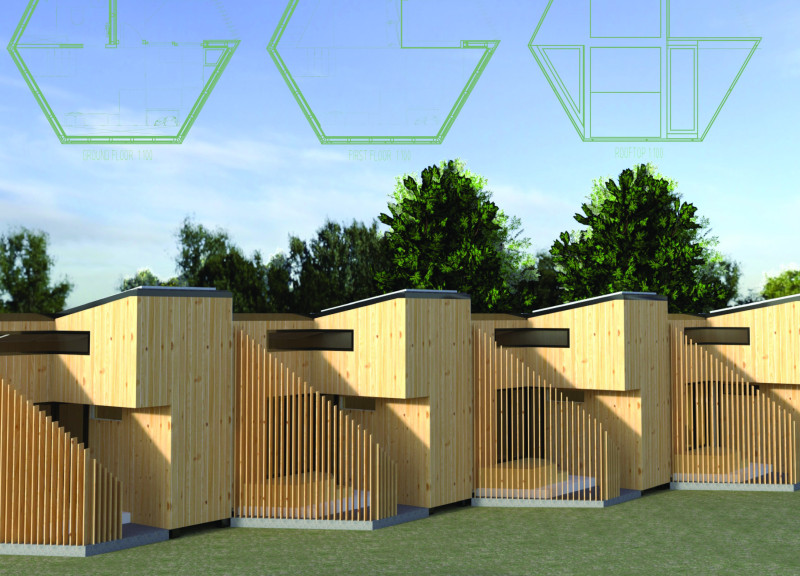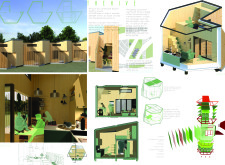5 key facts about this project
The Hive is located in urban areas where the cost of housing is too high for many young people. It aims to provide affordable living spaces without the heavy financial burden that often accompanies homeownership. The design focuses on sustainability, seeking to reduce environmental impact while maintaining practical functionality in a compact urban setting.
Sustainable Design
At the core of The Hive is its off-grid capability, which helps it operate independently. The building uses solar panels to convert sunlight into electricity, supplying power for daily use. Additionally, it incorporates a rainwater collection system that gathers and stores water. This approach not only supports a sustainable lifestyle but also increases the building's resilience in an urban environment.
Community Integration
Flexibility is a key feature of The Hive. It can function as a single unit or as part of a larger community. This adaptability makes it ideal for vacant lots in cities, where additional housing is often needed. By integrating with existing neighborhoods, The Hive helps foster a sense of community and maximizes land use in densely populated areas.
Material Utilization
Material choices play an important role in The Hive's sustainability goals. The project includes a mix of materials that reflect an emphasis on resource efficiency. The use of 2 cm bamboo and 2 cm wood fiber insulation highlights a commitment to renewable resources. Structural integrity is provided by 1 cm OSB panels, while thermal performance is enhanced with a 3 mm vapor barrier and 8 cm wood fiber insulation.
Every detail of The Hive contributes to its overall purpose, combining function with natural materials. The thoughtful design results in a space that is both practical and welcoming.



















































